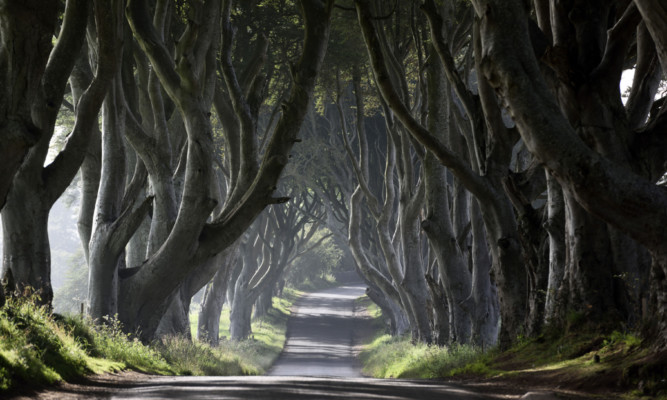Two of the top trunks in Courier Country are facing a public vote to be named Scottish Tree of the Year.
The Birnam Oak and the Poker Tree, Aberfoyle, are among the six finalists in the 2015 Scottish Tree of the Year contest.
The Woodland Trust Scotland supported by players of the People’s Postcode Lottery is inviting members of the public to vote for their favourite tree until October 12.
Residents in England, Wales and Northern Ireland will be doing likewise and the winners will go forward to the European Tree of the Year competition in February 2016.
The Birnam Oak and a neighbouring sycamore are thought to be the sole survivors of an ancient forest that once straddled the banks and hillsides of the river Tay, celebrated in Shakespeare’s Macbeth as the famous Birnam Wood.
As prophesied by Shakespeare’s three witches, the branches from this great wood camouflaged an army advancing against Macbeth almost 1,000 years ago. It is thought the Bard took inspiration for this section of his “Scottish Play” during a visit to Perth, Birnam and Aberdeen arranged by Elizabeth I in 1599.
An iron poker embedded in the Poker Tree in Aberfoyle recalls a violent incident in 1690. Bailie Nicol Jarvie travelled from Glasgow to visit his cousin, Rob Roy, stopping for refreshment at the inn at Clachan of Aberfoyle. A drunken highlander took exception to his presence and challenged him to a fight.
Jarvie tried to draw his sword but it was rusted and he could not. Instead, he pulled a hot poker from the fire and in the ensuing melee set fire to the highlander’s plaid, at which he fled.
The six trees shortlisted in Northern Ireland, meanwhile, include “the Dark Hedges”, an avenue of beech trees featured in hit TV series Game Of Thrones as the King’s Road and said to be haunted by a grey lady.
